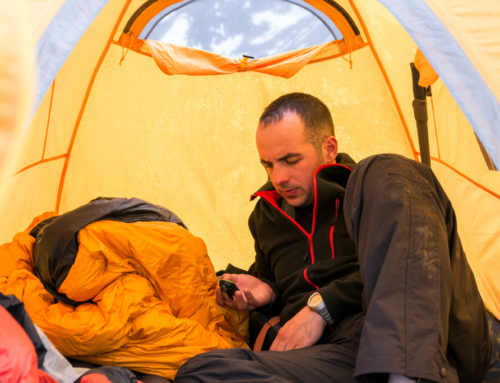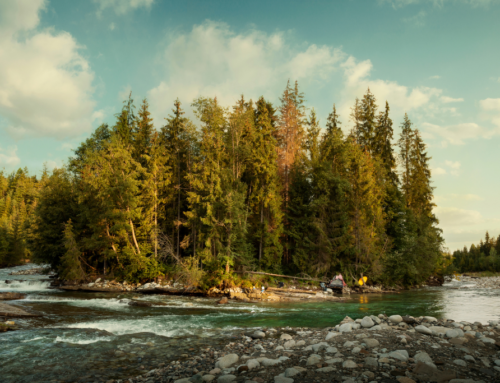GoCampingAmerica.com | Posted April
2nd, 2016
Bountiful
Birdwatching
Happy Camper Blog
Without a
doubt, many people find birdwatching (or birding) to be an enjoyable and
rewarding way to get out and enjoy nature. According to the U.S. Fish and
Wildlife Service, more than 46 million Americans participate in this
recreational activity. Author Nicholas Lund, who writes for Audubon.org, may
have described birding best when he wrote, “It’s basically a lifelong
scavenger hunt played across the entire earth. It’s equal parts science and
poetry, hoots of triumph and quiet reflection, adventures to far-flung
corners of the world and discoveries in your own back yard.” So whether
you’re a longtime birder or you’re just getting started, here are a few great
birding locations to add to your itinerary when you’re planning your next
camping trip.
ARIZONA
Patagonia-Sonoita Creek
Preserve
Located in a lush floodplain in southeastern Arizona, the
Patagonia-Sonoita Creek Preserve is considered to be one of the top birding
spots in the Southwest. It’s home to over 200 species of birds, including
Gray hawks and over 20 species of flycatchers. According to the Southeastern
Arizona Bird Observatory, the first known Sinaloa Wren in the U.S. was
recently spotted here. The sanctuary is owned and operated by The Nature
Conservancy.
CALIFORNIA
Point Reyes National
Seashore
Spanning more than 70,000 acres north of San Francisco, Point
Reyes National Seashore offers some of the best birdwatching in the nation.
Nearly 490 species have been spotted in in the park and the surrounding
waters. The park has a peninsula that juts out into the Pacific, so it also
attracts “vagrants,” birds that have somehow gone off course and are not
usually seen in this area. Point Reyes offers a wide variety of areas to
explore, including a valley, wetlands, lagoons, ponds and the rocks and cliff
areas around the historic Point Reyes Lighthouse.
FLORIDA
JN Ding Darling National Wildlife
Refuge
Located on Sanibel Island, this refuge was created to safeguard
the pristine wildlife habitat that is home to more than 200 species of birds
and to protect endangered and threatened species. It contains over 6,400
acres of mangrove forests, submerged seagrass beds, cordgrass marshes and
West Indian hardwood hammocks. Approximately 2,800 of the reserve’s acres
have been designated by Congress as a wilderness area.
KANSAS
Quivira National Wildlife
Refuge
Rated as one of the top birding destinations in the U.S., Quivera
is located right in the center of the Central Flyway, so its wetlands,
mudflats and shorelines attract large concentrations of migrating shorebirds,
including both eastern and western species. Spring, summer and fall are good
times to spot shorebirds, and in the spring and fall, the refuge also
attracts waterfowl and migrating songbirds. To date, over 340 species have
been spotted here.
LOUISIANA
The marshes of this southern Louisiana island provide the ideal
habitat for wading birds, including heron, ibis and snowy egrets; and Grand
Isle Beach is the place to spot gulls, terns, skimmers and Louisiana’s state
bird, the brown pelican. There’s also a live oak/hackberry forest that serves
as a resting spot for nearly 100 species of birds that migrate across the
Gulf of Mexico.
NEW HAMPSHIRE
Great Bay National Estuarine Research
Reserve
This reserve includes nearly 25,000 acres of tidal waters and it’s
also part of the North Atlantic flyway, so 20 species of waterfowl, 27
species of shorebirds and 13 species of wading birds winter here or use it as
a stopover on their migration. There are numerous viewing platforms on the
bay, and the reserve also contains an educational facility called the Great
Bay Discovery Center.
TEXAS
Aransas National Wildlife
Refuge
The combination of mild winters, waterways and abundant food
attract more than 400 species of birds to this coastal location. The refuge
has played a major role in saving the whooping crane from extinction and it
is home to the only wild flock of these rare birds. The refuge contains
several trails, including some that specifically focus on birding, and
there’s a 40-foot observation tower that offers the best chance of seeing a
whooping crane.







